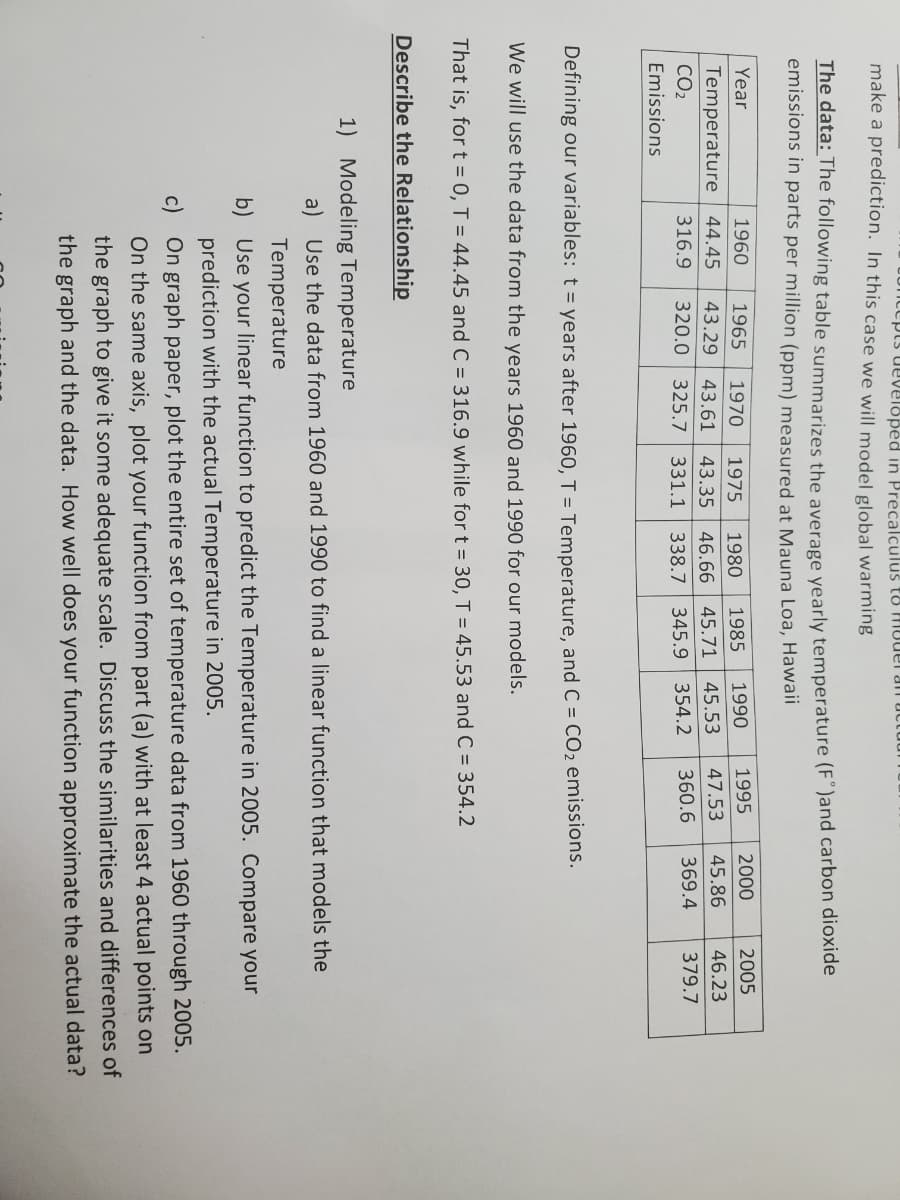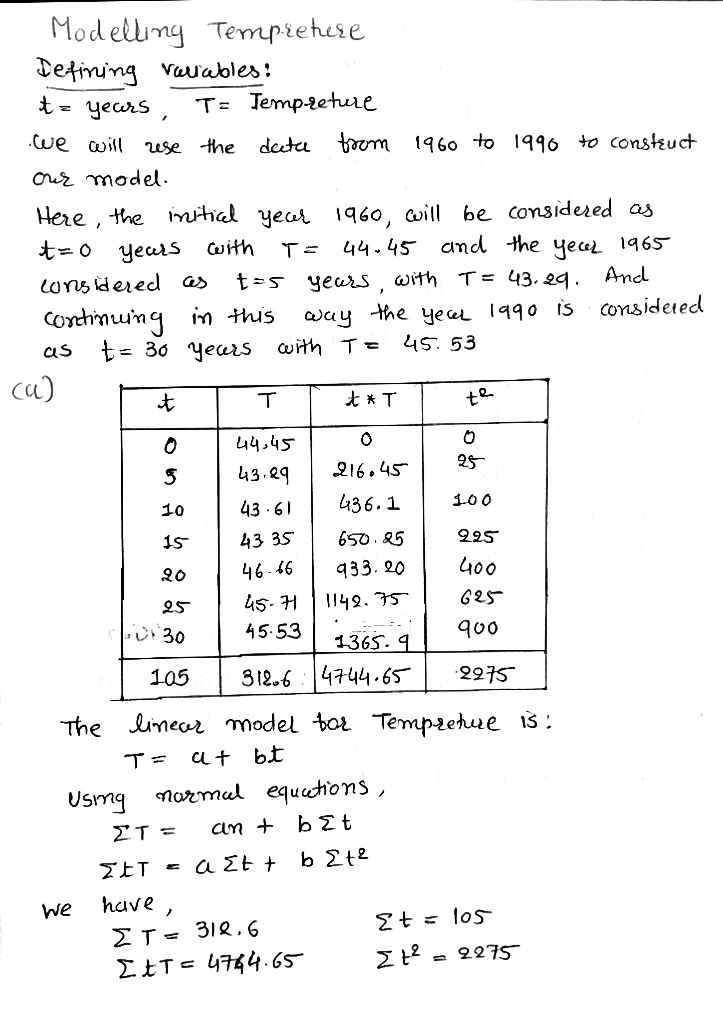necpts developed in Precalculus to HIUdel aIi uctuul make a prediction. In this case we will model global warming The data: The following table summarizes the average yearly temperature (F")and carbon di emissions in parts per million (ppm) measured at Mauna Loa, Hawaii Year 1960 1965 1970 1975 1980 1985 1990 1995 2000 Temperature 44.45 43.29 43.61 320.0 325.7 45.71 45.53 345.9 354.2 43.35 46.66 47.53 45.86 CO2 316.9 331.1 338.7 360.6 369.4 Emissions Defining our variables: t = years after 1960, T = Temperature, and C = CO2 emissions. %3D We will use the data from the years 1960 and 1990 for our models. That is, for t = 0, T = 44.45 and C = 316.9 while for t = 30, T = 45.53 and C 354.2 Describe the Relationship 1) Modeling Temperature a) Use the data from 1960 and 1990 to find a linear function that model Temperature b) Use your linear function to predict the Temperature in 2005. Compa prediction with the actual Temperature in 2005. c) On graph paper, plot the entire set of temperature data from 1960 t On the same axis, plot your function from part (a) with at least 4 act the graph to give it some adequate scale. Discuss the similarities an the graph and the data. How well does your function approximate t
Percentage
A percentage is a number indicated as a fraction of 100. It is a dimensionless number often expressed using the symbol %.
Algebraic Expressions
In mathematics, an algebraic expression consists of constant(s), variable(s), and mathematical operators. It is made up of terms.
Numbers
Numbers are some measures used for counting. They can be compared one with another to know its position in the number line and determine which one is greater or lesser than the other.
Subtraction
Before we begin to understand the subtraction of algebraic expressions, we need to list out a few things that form the basis of algebra.
Addition
Before we begin to understand the addition of algebraic expressions, we need to list out a few things that form the basis of algebra.


Trending now
This is a popular solution!
Step by step
Solved in 3 steps with 3 images






